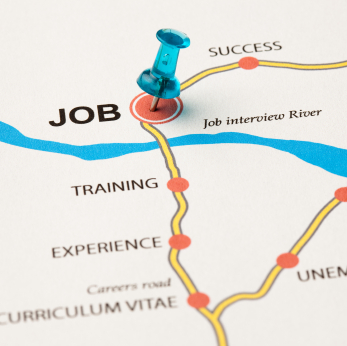Normally my focus on this blog is for freelance web design. I know things are tough right now and there are very legitimate reasons to seek the security of working for a company or web design firm. Over the last six years I have sifted through hundreds, maybe thousands of resume’s, mostly for web designers and developers and I have worked with three different recruiting agencies. With all of this experience, I wanted to first share in this article how to get a job interview as a web designer or developer, then in the next article, how to handle the interview itself.
If you haven’t already noticed, there is a LOT of web design competition out there. If you follow the below advice when seeking a full time, or even contract job, it will instantly put you ahead of 98% of your competition.
Since there is so much competition, I have a set of filters I use to quickly eleminate unfit candidates.
Here are the initial filters that I run any web design applicant through to weed out the chaff.
1. Glaring mistakes or typos on your web design resume.
Mistakes on your resume indicate that you either don’t pay attention to detail or you are stupid. Either way you won’t get asked for an interview
2. No portfolio or a bad portfolio
Your portfolio is where I look to see if you lied or overstated yourself on your resume. A decent portfolio is a must-have! All of the recruiters I have worked with quickly learn to not even bother sending me a resume to review if they don’t have a portfolio or at least some examples to go with it.
3. Bad source code
Yes, I do look at the source code of your websites! Things that I look for that tell me you aren’t ready for the job are:
a. Sloppy CSS that prove you rely on Dreamweaver, or worse, for your styles. I am not opposed to using Dreamweaver, but any web developer worth two cents will create their own classes and ID’s rather than letting Dreamweaver name everything “style1”, “style2”, etc.
b. Then I look to see if you are properly using CSS for all styling or is your site based completely on tables. Worst yet, did you just export HTML directly from Photoshop? Not on my team, you won’t.
c. Do your websites validate? They don’t have to be perfect, but there shouldn’t be any major errors.
d. Does the source code look cleaned and cared for? Are there comments? Ugly source code says that you don’t care, and you are sloppy and rushed.
4. Bad test scores.
If you cleared the first 2 filters then I have the recruiter test you. For web designers, I test on Photoshop, HTML, and CSS. For a frontend web developer I test for HTML, CSS, Javascript, and maybe PHP and MySQL if I am looking for a senior developer.
Obviously, the higher the score the better, but I also look at the amount of time taken on the test. Someone who scored 90% but took an hour and a half isn’t necessarily better than someone who scored 80% but took only 30 minutes. In general, though, I would rather you get a good score by looking up the answers than get a mediocre score without looking anything up. You don’t have to know all the answers to work for me, but you do need to know how to get the answers.
5. More advice for your web design resume
a. I prefer the classic one page resume!! Keep it simple and to the point. Your resume just needs to get my attention, not land the job. I don’t want to read your life story. I don’t care about all of the fast food joints you worked at, only include relevant work history.
b. I will ask about long blackout periods where you have no work listed. If you were in school, that is a perfect answer. If you were unemployed, then I expect you to have been doing freelance work; in fact, I prefer that. Just saying that you were unemployed for the last year and a half is not acceptable. I know things are tough right now, but you can do web design or development from your basement.
c. Why would you not have a nice-looking resume for a job that involves graphic design?? I’m just saying…
Congratulations, if you made it this far then you will likely get a callback and be asked to come in for an interview. In my next article I will talk about how to master a web design or web development job interview and give yourself the best possible chance of landing that coveted position.
Here are some additional resources to help you create an amazing web design portfolio:
- 26 Freelance Portfolios for Creative Inspiration
- How to Create an Amazing Portfolio with a WordPress Website
- 20 High Quality Free WordPress Portfolio Themes 2012
Here is more help to write a web design resume:


These are good tips, but talking about typos and then having “Are their comments?” makes the grammar nazi in me go bananas…
Duly noted and corrected 🙂 Thanks